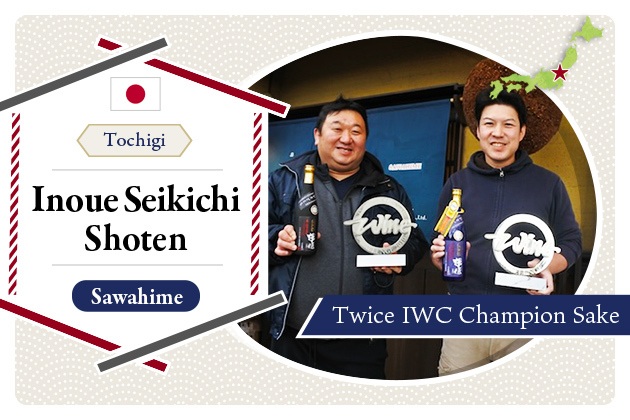
2019.01
27
What is the "Polishing Ratio" often seen on Japanese Sake?
Ever seen the words 'polishing ratio xx %' written on a sake bottle?
The polishing ratio greatly affects the taste and aroma of sake. It also affects whether you are permitted to call the sake certain names such as 'Junmai Daiginjo' and 'Ginjo'. By understanding the polishing ratio, you will be able to better understand the sake that you choose, so let's take a look!
What is the polishing ratio?
The polishing ratio indicates how much of the rice is polished away. The percentage remaining after polishing the rice is the 'polishing ratio'. For example, if the stated polishing ratio is 60%, then 40% of the rice has been removed.
Rice is polished using a machine like the one below.
Recently, the technology of rice milling machines has improved so much that it is possible to remove more than 90% of rice, or use a rice flattened technique to efficiently scrape away unwanted parts of the rice.
How the polish makes the sake
Why is rice polished when making sake in the first place?
The outer coating of rice contains proteins and fats among other things. When too much protein or fat enters, it can adversely affect the sake's taste and aroma. Therefore, it is important to polish the rice in order to remove these unwanted components.
While cooking rice removes 10%, the rice used in sake must remove at least 30%. Sake using rice with a high polishing ratio (less rice coating removed) often has a rougher, stronger taste with much complexity, and has the filling aroma of steamed rice.
In comparison, sake with a low polishing ratio (more rice coating removed) tends to have a vibrant, fruity aroma with a clear taste free of other foreign distractions. There even exists sake with polishing ratio of 1% (or 99% of the brown rice removed)!
Generally, sake with a low polishing ratio is more expensive. Since more rice is removed, more ingredient is needed to produce the sake compared to that with a high polishing ratio.
How the polish gives the name
Special designations is one way to classify sake. I am sure many have seen words like 'Junmai Ginjo' and 'Daiginjo'.
What special designations do is to help categorize the sake based on two criteria: the 'degree of polish' and the 'addition of alcohol additives' and is probably the most commonly known categorization of Japanese sake. As seen below, the special designation that can be given varies depending on the degree of polish.
| Special Designation | Polishing Ratio | Additive – yes/no |
|---|---|---|
| Junmai | No regulation | No |
| Tokubetsu Junmai | <60% | No |
| Junmai Ginjo | <60% | No |
| Junmai Daiginjo | <50% | No |
| Honjozo | <70% | Yes |
| Tokubetsu Honjozo | <60% | Yes |
| Ginjo | <60% | Yes |
| Daiginjo | <50% | Yes |
Summary
Above, I explained what the polishing ratio is.
At a high level, armed with this understanding you can now infer from the degree of polish whether you can expect the taste to be strong and bold or light and fresh. Also, I hope you can now see what the names such as 'Junmaishu' and 'Daiginjo' mean.
For those of you interested further exploring the world of sake, the polishing ratio is a good measure to master!
Pickup Articles
2019.01.18
2019.01.25
Trending Articles
Popular Articles
Recent Articles












